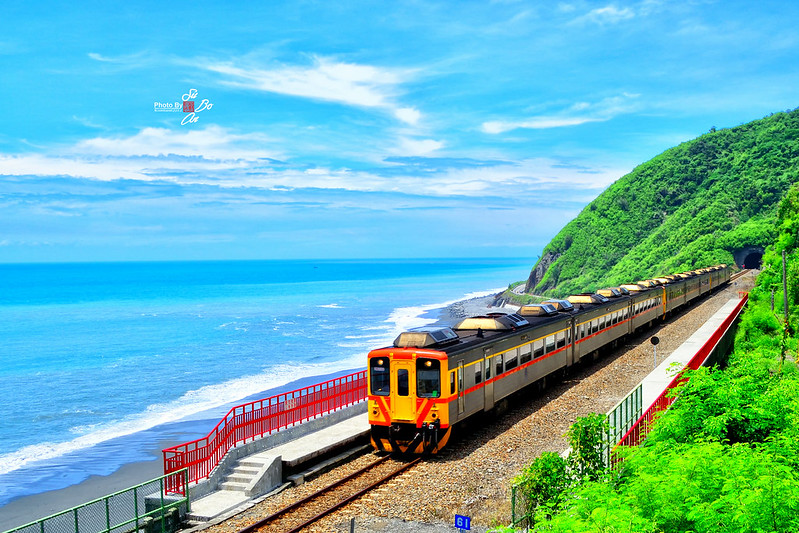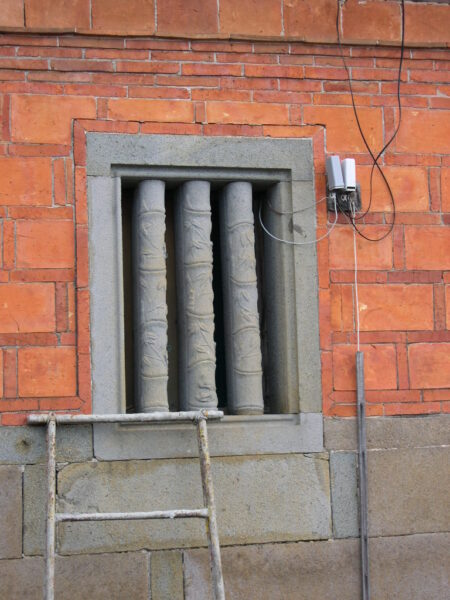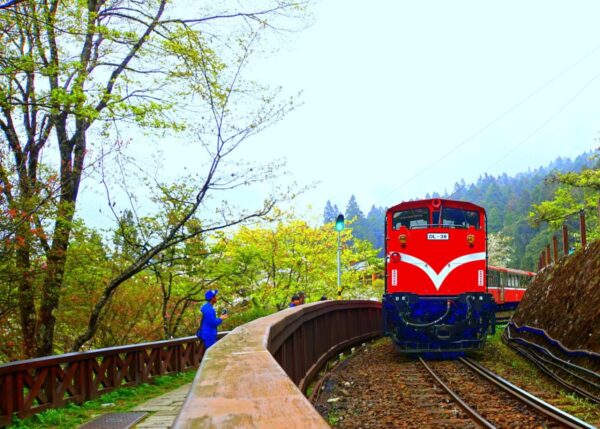Choosing a mode of transport to get around your travel destination is a more important decision than you might first think. In Taiwan, planes, private vehicles, and bicycles are all highly feasible ways of exploring the island. Depending on your travel style and length of trip, all have their benefits and tradeoffs. But have you ever considered exploring Taiwan predominantly by rail?
Traveling by train offers a unique perspective on the island’s modern-day culture, the perfect mix of future-thinking and tradition. Whether you have a day or week to spare, train travel in Taiwan offers a curious traveler a (mostly) very convenient and always stunning journey. We guarantee you’ll be catching your breath every time the train turns a corner to another out-of-this-world view, and you’ll also be traveling in a more environmentally-friendly fashion. What’s not to love?
Here are just a few of our favorite train journeys in Taiwan:

Duoliang Station in Taitung
Express to Taitung
Trains have long been a key form of transport in Taiwan, but it wasn’t until 1991 — exactly a century after the inauguration of its first railroad — that it became possible to travel by locomotive all the way around the 394-km-long (245 miles) island. The completion of the South-Link Line, which connects Fangliao in Pingtung County with Zhiben, a hot springs resort established by the Japanese during the half century they ruled Taiwan, is intensely scenic for the same reason its construction was arduous and expensive: There’s hardly any flat land between those two places, with the country’s mountainous backbone forming the most formidable obstacle.
Whenever a typhoon strikes, rivers in this part of Taiwan swell into vast torrents. The line’s 158 bridges are necessarily high and robust. There are no fewer than 36 tunnels, the longest of which is a 8.07-km-long (5 miles) bore through the Central Mountain Range. Travel time between Kaohsiung and Taitung is usually less than two and a half hours. Some of these services reach Hualien (the jumping-off point for Taroko Gorge) just under four hours after leaving Kaohsiung.
To best enjoy the South-Link Line’s scenery, traveling from west to east is recommended. It doesn’t matter on which side of the carriage you sit. If it’s midweek, there’s a good chance you’ll be able to switch seats every time something catches your eye. That could be a waterfall, a boulder-filled riverbed, or an indigenous mountain farmer working in an orchard. Time and time again, the train emerges from a tunnel, crosses a bridge high above an inaccessible and uninhabited valley, then hurtles into another tunnel.
After the 17th tunnel, eastbound passengers will glimpse the Pacific. Not long after, they’ll pass Duoliang Station. This long-closed station is more popular now than it ever was when trains actually stopped here, and it’s not hard to understand why. Without much effort, it’s possible to capture your friends, an express train, and the Pacific Ocean in a single photo. Whether you get off in Zhiben, or continue north towards Hualien, you’ll find the South-Link Line an excellent introduction to the wonders of Taiwan’s unspoiled east.
Metro to Tamsui
The historic town of Tamsui makes for a great Taipei day trip, and the 38-minute ride out there on the Red Line of the Taipei Metro is a pleasure.

One of Tamsui’s many old buildings
As you’d expect in a city as crowded as Taipei, much of the metro network is underground. The Red Line, however, emerges into daylight just before Yuanshan Station, which is within walking distance of Dalongdong Baoan Temple, perhaps the capital’s most alluring hall of worship.
The tracks are elevated all the way to Tamsui, so you can look down into nearby city streets as well as enjoy views of the mountains that give Yangmingshan National Park its rugged beauty. If you see passengers getting off at Beitou Station, there’s a good chance they’re taking the short spur to Xinbeitou, a hot springs resort since the first decade of the 20th century.
At Guandu, where the nature park draws birdwatchers from afar, the Red Line veers close to the broad Tamsui River. The estuary is an impressive sight, not least because the other side is dominated by Guanyinshan, a 616-m-high (2,021 ft) dormant volcano that makes for an excellent half-day hike.
One stop before the train glides into Tamsui Station, look down at the river, and you’ll see what’s claimed to be the world’s most northerly mangrove swamp. Typical travel time between Taipei Main Station and Tamsui is 38 minutes. Because the metro is popular with commuters, weekday rush hours are best avoided.
Being so close to Taipei, Tamsui can get busy. Because there’s an abundance of historic sites to visit and delicious foods to sample, we love to visit — but we do recommend traveling with a Life of Taiwan guide who can get you off the beaten path and show you our favorite hidden spots.

The Alishan Forest Railway is a true feat of engineering.
Logging Train to Alishan
A railway established so sightseers could enjoy Taiwan’s spectacular high-mountain scenery? Nothing was further from the minds of those who planned the narrow-gauge rail link that’s connected Chiayi and Alishan since 1912.
Built so supplies could be hauled up to logging camps and felled timber brought down to sawmills on the lowland, the 71.4-km-long (44.4 miles) Alishan Forest Railway is a remarkable piece of engineering. In the 1930s, word began spreading about this wondrous way to enter the mountains. Between the altitudes of 543 m (1,781 ft) and 905 m (2,969 ft), the line makes eleven consecutive turns to the right as it corkscrews up a mountain called Dulishan. And trains reaching this point aren’t even halfway done with their climbing — Alishan is 2,216 m (7,270 ft) above sea level.
At that altitude, the cherry blossoms that decorate lower elevations from December onwards don’t come into their own until the middle of spring. But whatever the season, the immense ‘god’ trees and the break-of-dawn ‘sea of clouds’ make Alishan a breathtaking destination.
Trains chugging their way through tea-growing country and into the realm of the Tsou indigenous people go through 50 tunnels and across 77 bridges. As of early 2024, however, typhoon damage to the track means that trains halt at Shitzulu, about four fifths of the way to Alishan. Of course, if you’re travelling with Life of Taiwan, you can arrange for your driver-guide to put you on the train at Chiayi, collect you at Shitzulu, and convey you to your accommodation inside Alishan National Forest Recreation Area.
If you’d like to consider including train travel in your next Taiwan journey, get in touch today. Our experienced travel designers would love to share their knowledge and help you plan a customized trip that suits your every need.
